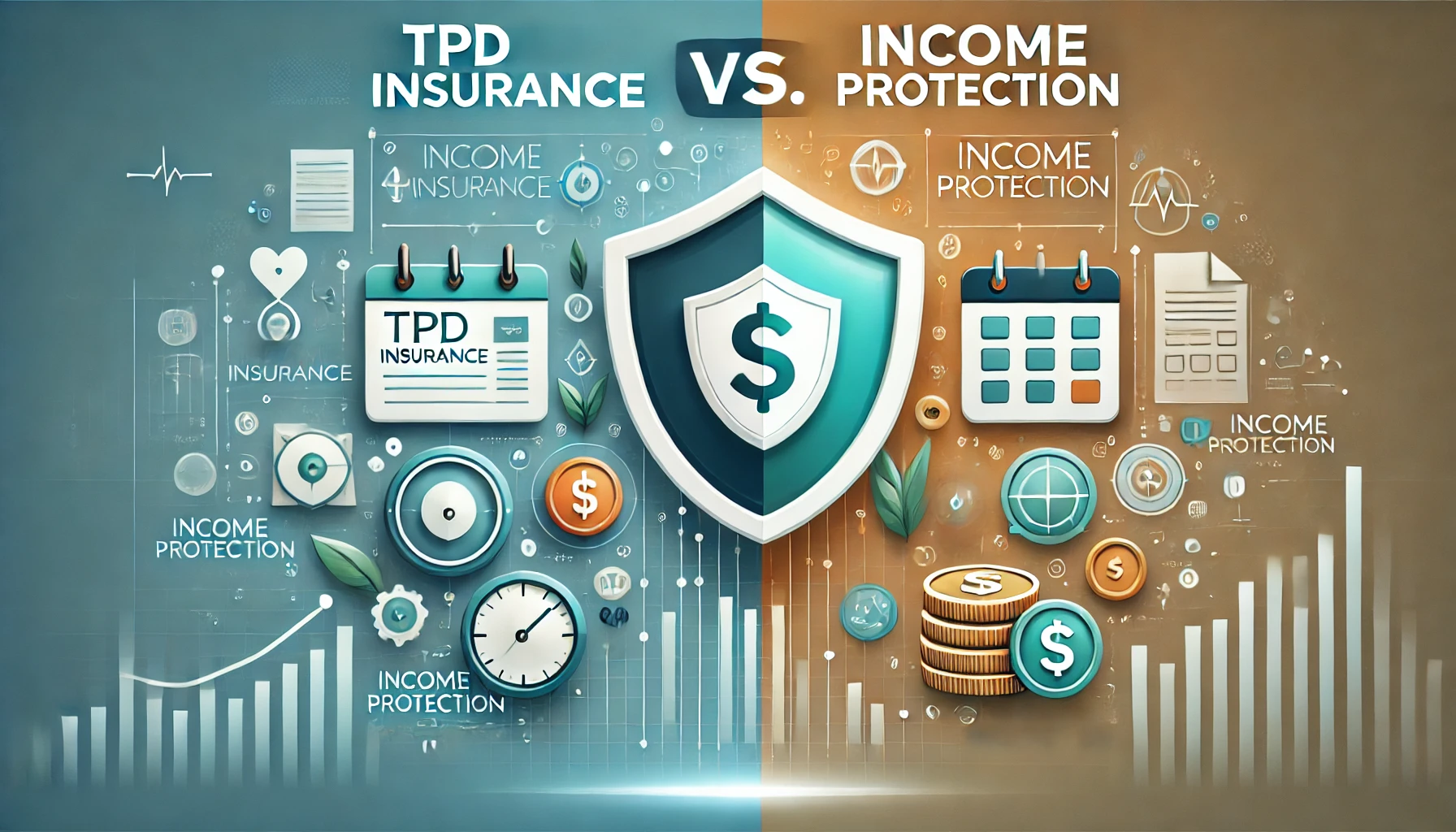When considering financial protection for illness or injury, individuals are often given a choice between two common insurance options: TPD Insurance vs Income Protection. While both offer crucial support during difficult times, they serve different purposes and work in distinct ways.
In this blog, we have highlighted the key differences between both options to help you make an informed decision.
What is TPD Insurance?
TPD insurance provides a one-time lump-sum payment to individuals who are unable to return to work due to a permanent disability. It’s designed to cover long-term financial needs such as paying off debts, medical expenses, or daily living costs.
What is Income Protection Insurance?
On the other hand, income protection insurance replaces a portion of your regular income (usually up to 75%) if you cannot work due to illness or injury. Payments are made periodically, typically on a monthly basis, and can continue for a set period (e.g., 2 years) or until retirement age, depending on the policy.
Key Differences Between TPD and Income Protection
| Aspect | TPD Insurance | Income Protection Insurance |
| Payment Type | Lump-sum payout | Ongoing monthly payments |
| Coverage Duration | Permanent disability only | Temporary or long-term incapacity |
| Purpose | Covers large expenses (e.g., debts) | Replaces lost income |
| Claim Conditions | Total and permanent inability to work | Inability to work temporarily or long-term |
| Cost | Typically lower premiums | Higher premiums due to broader coverage |
When Should You Choose TPD Insurance?
TPD insurance is ideal if you:
- Want financial support to cover large one-time expenses like mortgages or medical bills?
- Are concerned about long-term financial security for your family?
- Prefer a single payout rather than ongoing payments.
When Should You Choose Income Protection Insurance?
Income protection insurance is more suitable if you:
- Need to replace a steady income during periods of temporary or long-term incapacity.
- Want to ensure you can cover daily living expenses like rent, utilities, and groceries?
- Are self-employed or rely heavily on regular income to sustain your lifestyle?
Can You Have Both?
Yes, many Australians opt to have both TPD and income protection insurance to enjoy comprehensive financial protection. This combination ensures you’re covered for both short-term income loss and long-term financial needs.
Example Scenarios
Scenario 1: Long-Term Disability
-
-
- A construction worker suffers a severe spinal injury, leaving them unable to work permanently.
- TPD Insurance: Provides a lump sum to pay off the mortgage and cover future expenses.
-
Scenario 2: Temporary Incapacity
-
- A marketing executive is diagnosed with a treatable illness that requires 6 months off work.
- Income Protection Insurance: Provides monthly payments to cover living expenses during recovery.
Cost Comparison
While income protection insurance typically has higher premiums due to its broader coverage, TPD Insurance vs Income Protection highlights that TPD insurance is more affordable but limited to permanent disabilities. Combining both policies can be a cost-effective strategy when aligned with your financial priorities.
Integrating with Superannuation
Both TPD and income protection insurance can be linked to your superannuation fund, making them more accessible and affordable. However, when considering a superannuation TPD claim, it’s important to understand the potential limitations in coverage and ensure the policy details align with your financial needs.
Challenges of Combining TPD Insurance Vs Income Protection
- Overlapping Benefits: Ensure policies complement rather than duplicate each other.
- Premium Costs: Balancing the cost of both policies with your budget.
- Policy Complexity: Understanding the terms and conditions of each policy.
Real-Life Case Studies
- Dual Coverage Success: A self-employed carpenter opts for both TPD and income protection insurance. Following a workplace accident, income protection covers immediate expenses, while TPD provides long-term financial security.
- Costly Oversight: An IT consultant solely relies on income protection but faces financial challenges after permanent disability as no lump sum is available.
Tips for Choosing the Right Combination
- Assess Financial Needs: Calculate your expenses, debts, and long-term obligations.
- Consult an Advisor: Seek guidance from a financial advisor to tailor the best combination.
- Regularly Review Policies: Ensure your coverage evolves with life changes such as marriage or home ownership.
Conclusion
Choosing between TPD Insurance vs Income Protection depends on your financial needs, lifestyle, and risk tolerance. For Australians seeking complete peace of mind, combining both policies often provides the best safety net for short-term and long-term financial protection. Consult one of our TPD lawyers in Sydney & Paramatta at 0288966046 to understand which insurance option will be the best for you.

